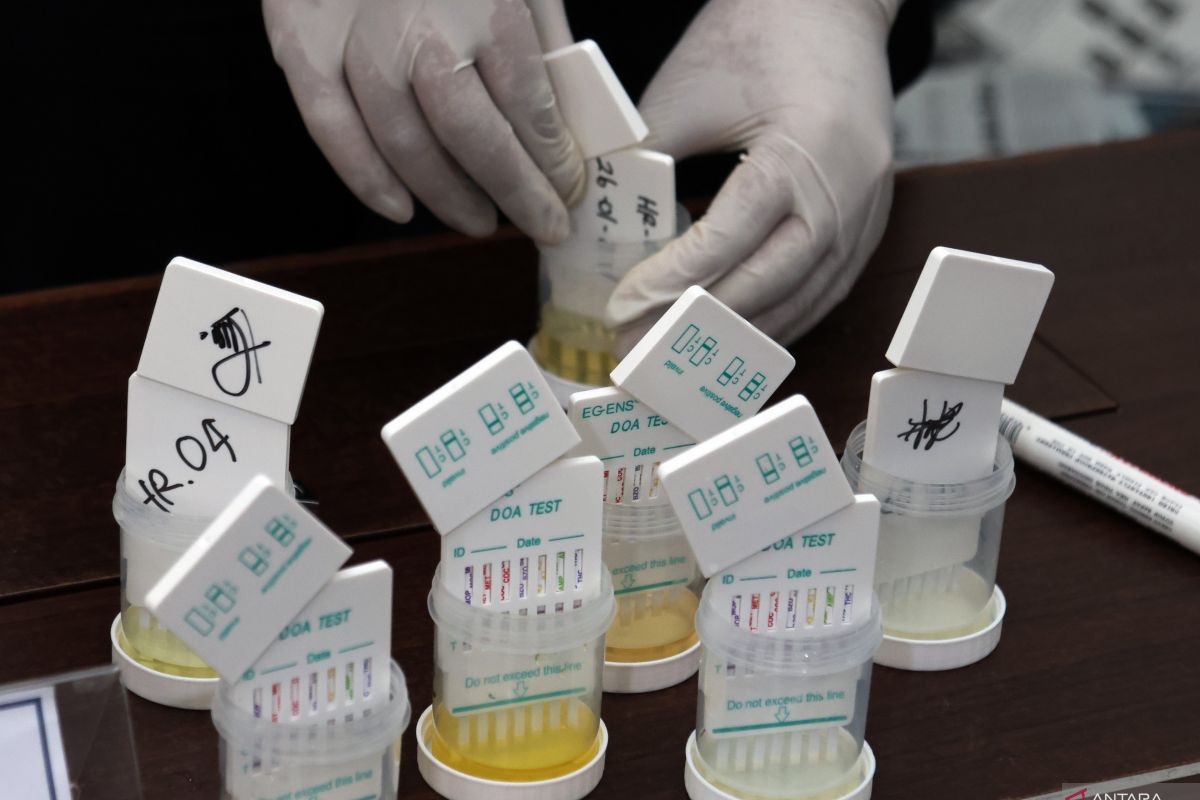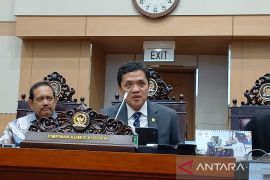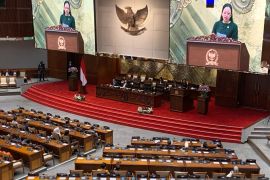As of April 2024, the country's 532 prisons and detention centers housed 271,385 inmates, despite having the capacity for only 140,424 individuals. This means these facilities are extremely overcrowded, with roughly twice as many people as they can handle.
Out of all the people in prison and detention, more than half—135,823 individuals—are linked to crimes involving drug abuse or drug trafficking.
The new KUHP is expected to bring a fresh approach to handling this issue, as this legislation emphasizes restorative justice as the primary response to crimes, including those linked to drugs.
Once this law is fully enforced, Indonesia can expect more drug addicts to receive the treatment they need at rehabilitation centers, rather than end up behind bars as punishment.
In addition to the KUHP, the government plans to grant amnesty to about 44 thousand prisoners, including drug addicts, as part of the efforts to address overcrowding.
While focusing on restorative justice for drug addicts may help reduce density in prisons, it does come with some risks—especially the potential for overcrowding in rehabilitation centers, given Indonesia's shortage of such facilities.
A study conducted by Sulistiandriatmoko, a drug law expert, reveals that several police investigators preferred to imprison drug abusers and charge them with criminal offenses due to the lack of rehab facilities in their regions.
This tendency stems from the fact that transferring drug addicts to out-of-town rehab centers often requires the police to spend additional funds, an expense that their budget may not be able to cover.
That said, the government must prioritize building rehab centers in every province—and ideally in each district and city—to tackle the issue more effectively and alleviate overcrowding.
Such an initiative can be justified further by looking at the fact that many of those implicated in drug abuse cases are repeat offenders who struggled to overcome their addiction.
These individuals tend to succumb to drug temptation again not long after serving their sentence.
Considering this trend, it can be inferred that incarcerating drug addicts is not an efficient way to combat the abuse of drugs among citizens.
The National Narcotics Agency (BNN) is currently running 216 rehabilitation facilities across Indonesia, with 12,204 drug addicts having received treatment. On top of that, BNN has partnered with 649 other facilities run by different organizations.
However, this figure is undoubtedly dwarfed by the 3.3 million drug users detected in Indonesia, which make up about 1.73 percent of the country’s population. Most of these individuals are addicts.
Acknowledging this irony, Chief of the National Police (Polri) General Listyo Sigit Prabowo urged all stakeholders, including regional governments, to erect more rehabilitation centers to save drug users.
He stated that these governments may seek support from the Polri or the Indonesian Armed Forces (TNI) to establish such facilities and partner with educational institutions, including Islamic schools, to help addicts reclaim their religiosity.
Related news: BNN leads in strengthening drug prevention, eradication efforts
Overhauling the rehab system
Building a reliable national drug rehabilitation system is an inevitable move for Indonesia to break the vicious cycle strangling over three million citizens and to help young people shape a bright future free from the dangers of addiction.
This initiative should be built on efforts aimed at tackling several prevalent issues, such as inadequate funding for rehabilitation services and the fact that many drug addicts are not registered with state health insurer BPJS Kesehatan.
Indonesia's rehab system is also held back by low awareness among addicts and their families about the importance of communicating with authorities to receive the necessary treatment.
It is just as important for the government to ensure that rehab centers provide quality services to support drug users in overcoming addiction, as substandard services could lead addicts to abandon the facilities instead.
To improve its rehab system, Indonesia can take at least three effective steps, including upgrading the infrastructure and staff at rehab centers.
These improvements are expected to improve both outpatient and inpatient services.
BNN Head Marthinus Hukom has shared his thoughts on this, highlighting the importance of public involvement.
He encouraged people to contribute to rehab efforts through the Community-Based Intervention (IBM) program, which aims to expand access to rehab services. As of 2024, some 418 IBM units had been set up, with 2,217 rehab agents involved.
The second step deemed necessary is optimizing the role of the Integrated Assessment Team (TAT) that comprises the Ministry of Health, Ministry of Law, Polri, BNN, and prosecutors.
All parties forming this team should build their capacity and be on the same page about the importance of prioritizing the restoration of justice through rehabilitation efforts over criminal charges against drug users.
As for the third step, Indonesia needs to issue and implement more regulations that are supportive of drug user rehabilitation, complementing the soon-to-be-active new KUHP Law.
These legal instruments could take the form of laws, government regulations, presidential regulations, ministerial regulations, or others. All should pave the way for a better drug rehabilitation system in the country.
The Presidential Instruction of 2020 concerning the National Action Plan for the Prevention and Eradication of Drug Abuse and Drug Trafficking, for instance, dictates that improving the quality and accessibility of rehabilitation services is vital for combating drug-related offenses.
This indicates the state’s acknowledgment of the perks the rehabilitation path has to offer.
Two goals must be achieved to declare the success of improving rehabilitation services nationwide: full compliance with the National Standard for Social Rehabilitation of Drug Users and the integration of rehabilitation information systems.
Working towards the national standards, the BNN in 2024 enhanced the capacity of rehab officers, with 106 of them receiving certificates of competency.
During the 2020-2024 period, the anti-drug agency led a total of 367 rehab facilities to meet the national standard.
Assuming that all the necessary steps are successfully taken, Indonesia can surely expect to save more of its citizens from the misuse of drugs through a reliable, quality rehabilitation system.
It is crucial that Indonesian authorities and the public stand together, sharing an optimistic view that choosing the path of rehabilitation for drug abusers will have far-reaching positive impacts.
Prioritizing rehabilitation over criminal charges not only helps drug users regain their dignity but also relieves the government of the burden of managing overpopulated jails and dealing with repeat offenders.
Related news: Prabowo prioritizes drugs combat as government program: BNN
Translator: Agatha O, Tegar Nurfitra
Editor: Bayu Prasetyo
Copyright © ANTARA 2025












